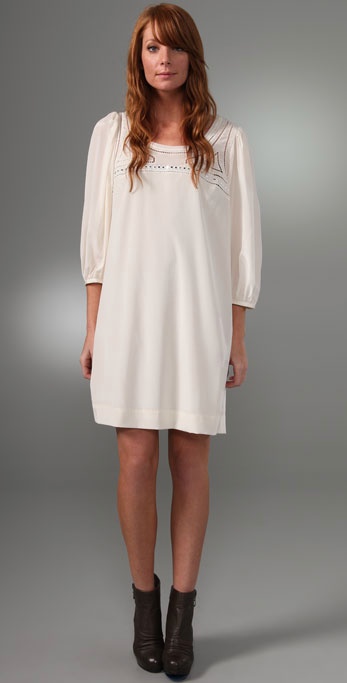What’s A Model Worth? Why We Hope It Involves Personality
L’Oreal’s famous slogan is “because you’re worth it,” and they regularly break out the big checks for stars like Beyonce, Freida Pinto, Eva Longoria, and, as of today, Glamour September cover girl Jennifer Lopez to help convince women that their products are worth it.
When it comes to models though, how exactly do clients calculate what a model is worth?

Elena Greenwell, a model for online retailer Shopbop
Earlier this week, Jezebel published documents from an ongoing lawsuit involving models who claim their former agency was withholding payments. the most interesting part are earning statements where it’s discovered that for all of the prestige that comes with a Vogue editorial, the H&M ad running next to it was probably worth much more for the model. Specifically, it’s revealed that Vogue‘s day rate for models (at least in this case) is a paltry $250, and French Vogue‘s is $125. Don’t feel too bad – campaigns for H&M pay $60,000, J.Crew pays $15,000 for catalog appearances and booking campaigns for luxury brand ad campaigns can range from $35,000 to $172,500 – we’re asusming for more than one campaign.
While the money is obviously in ads, the editorial appearances are seen as a catalyst for launching commercial careers. The assumption being that the models in the commercial campaigns bring in at least as much as they’re paid in sales.
Today, the New York Times claims that online retailers see more value in more “relatable” looking models. While you may be able to relate to Karlie Kloss or Freja Beha Erichsen just fine, online retailers think they’ll influence a wider audience with slightly larger models (size 4, rather than size 0) who is good looking, but not in the “gorgeous, but I’d never be able to look like that” way that runway models can be.
There are enough photoshop disasters from fashion ad campaigns to remind us that the definition of relatable is still incredibly subjective, but Shopbop and Gilt both voice opinions that shoppers don’t want to see impossibly flawless models when shopping.
“We don’t want a model to appear intimidating in a way they do in a fashion show,” Gilt’s Alexandra Wilkis Wilson tells the Times.
Steven Reider, a manager at Elite Model Management says online  appearances haven’t “ever made anyone a star on the global playing field of models,” but if the money is made on the more commercial campaigns, does that matter? Bluefly, the only retailer mentioned in the Times’ piece to test the difference between using models and using headless mannequins noticed only a very small increase in sales when using people to promote the items. Customers, they found, placed far more value on being able to zoom in on details and view more detailed photos.
Does this, in fact, support the position of using models as clothes hangers rather than personalities? After all, if an actual clothes hanger brings in the same amount in sales, why bother with the more costly model? We actually think it points more to the need for the return of the 90’s style supermodel who was as much of a draw as the clothes. Beauty companies – perfume makers especially- have found celebrity endorsed products can equal big sales, so there’s obviously some real value in name or face recognition. Magazines – Vogue included, have seen increases in circulation by pushing models off the cover in favor of actresses, musicians and other celebrities. They may not have the recognition of  J.Lo or Beyonce, but wouldn’t models become more relatable if they were allowed to become celebrities in their own right again? Victoria’s Secret has done pretty well business-wise with that line of thought, in spite of the fact that most women buying underwear will probably never be able to relate to walking around wearing a million dollar bra (or contract, for that matter).
